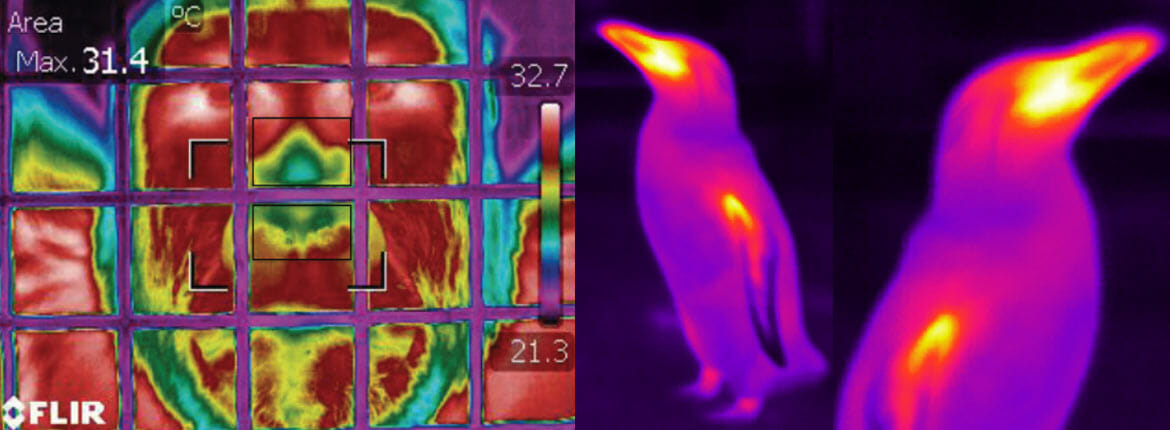IRT as a Tool to Assess Animal Welfare
Infrared thermography (IRT) is a tool that can be used to estimate temperature remotely by measuring the amount of thermal energy that an animal or object emits. All living organisms emit thermal energy in the form of radiation as a result of normal physiological processes. An IRT camera can be used to create a visual map of an animal’s body temperature, which is referred to as a thermogram.
Finding new ways to assess the emotional lives of animals is critical to advancing our understanding of animal welfare. It is also incredibly important to develop methods that are non-invasive, thereby not affecting the animals during the process. Infrared thermography is a potential way for us to do just this. The body’s response to certain things, such as stress and positive experiences, can have an impact on temperature. This means that in some cases, changes in the temperature of body parts, such as the eyes, can tell us how an animal is responding to an event. This kind of information is really valuable, as we cannot ask an animal directly how it is feeling. It is hard enough for us to understand how other humans are feeling. imagine how difficult it is to grasp how other species – most of which perceive the world very differently than we do and cannot communicate with us using words – are experiencing the world around them from an emotional standpoint.
Detroit Zoological Society staff are currently investigating new ways to use IRT to assess animal emotional states and their impacts on welfare. In 2016, staff collected IRT images of giraffes before and after they voluntarily participated in feeding encounters with Detroit Zoo visitors. The results showed that temperatures in areas indicating emotional arousal did not change during the course of visitor encounters, suggesting these experiences were largely neutral for the giraffes. Staff are currently applying the same approach to understand the welfare impacts of interactions with humans during routine husbandry and training exercises for western lowland gorillas. Developing innovative techniques like IRT are essential to the mission of the Center for Zoo and Aquarium Animal Welfare and Ethics, because they give us more tools to ensure that animals are thriving at the Zoo.



